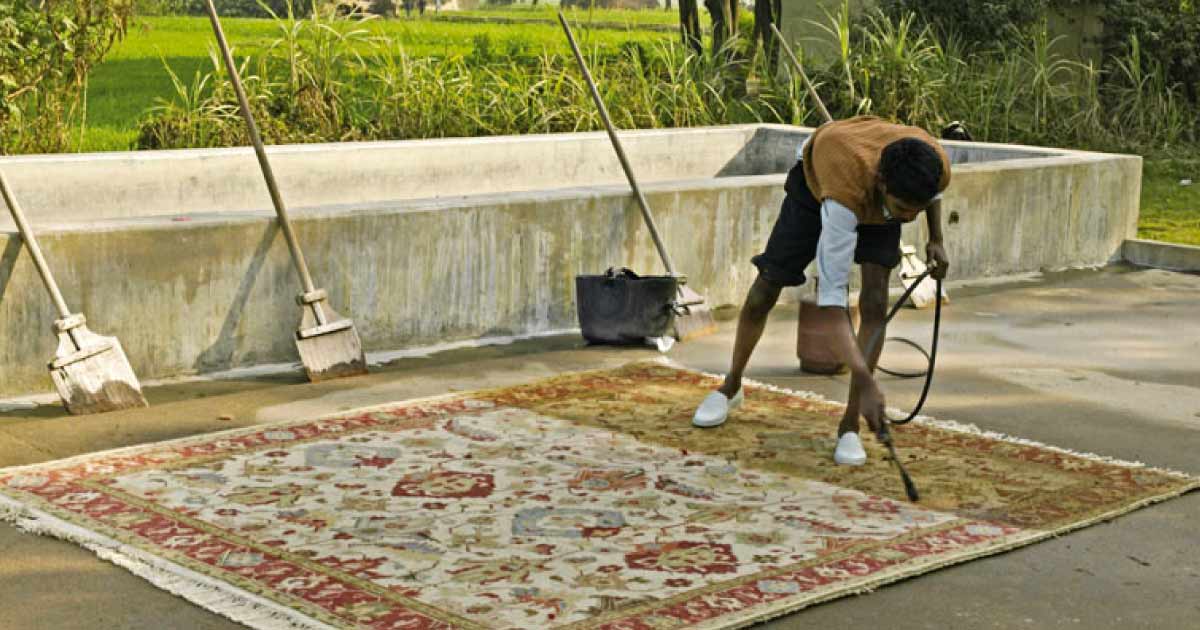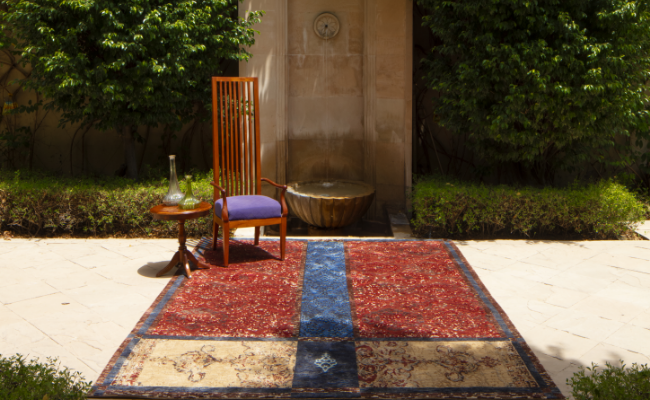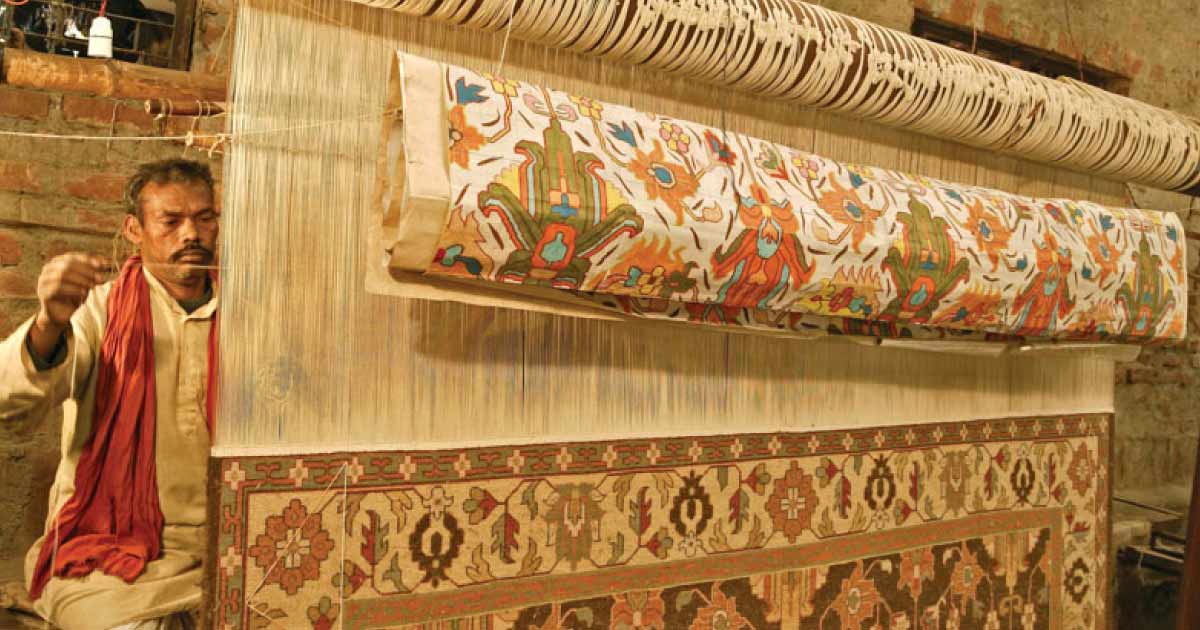
How to Repair Worn Out Rugs This Festive Season
Diwali is here, and with it is our urge to clean the entire house not leaving behind even the tiniest dust particles. It is unquestionably a great thing to keep our house clean even on normal days for our own wellbeing. However, talking Diwali, it becomes an absolute necessity for a lot of reasons. One of the main reasons is the fact that in India, a large part of the people who celebrate the festival also associate it with purity and wealth. It is believed that if you keep your homes clean and looking beautiful on this particular day, the gods will bestow us with good fortune and health for us and our loved ones. While the notion does have a historical, cultural, and religious significance, it is also a proven fact in psychology that cleanliness does attract positive vibes to our homes.

When we talk about cleaning our homes, we usually know it all. Be it dusting the corners, mopping the floors, organising the wardrobes and many other such cleaning tasks. However, one thing that does require a lot of our attention are our rugs. Rugs have this innate capability to lift up the ambiance of any space within seconds. However, a dull, worn out rug could also bring it down the same way. To avoid it from happening, let us learn a few ways to make our rugs look backing to their original marvellous state with the right clean and repair methods.
1) Choose the right tools and supplies
Rugs come in all shapes, sizes, and materials. Depending upon all these elements we should choose the right tools and supplies to clean and repair our rug. The most common tools for repairing rugs include:
- Adhesive (duct) tape
- Curved upholstery needle
- Heavy-duty thread
- Linen thread or monofilament (for braided rugs)
- Cotton binding tape
- Putty knife
- Quality fabric scissors
On the other hand the cleaning supplies should also be chosen as per the material chosen to avoid problems like, color fading, or texture getting ruined. The most common supplies and tools required for cleaning a rug include:
- Rug shampoo (or mild dish soap)
- Bucket
- Soft-bristle brush or sponge
- Water
- Rubber gloves
- Garden hose
- Wet-dry vacuum
2) Figure out the problem and the solution
Identifying the problem with our rug is the first step towards bringing it to its original shape and state. Over time and usage, like any other product, rugs may lose their charm too. There are a number issues that we might face when it comes to our rugs, but don’t worry because a lot of them can be solved with just a little bit of effort.
Due to traffic in our space and area, the edges of our rug might fray. Handwoven rugs due to their type of weave, may appear unbounded. Additionally, our rug might also get spilled on and burned, have a cut or tear, or if it is a braided rug, it might appear unbraided. We can fix these issues by taking a number of measures such as patch the back side with tape or sew it together. If the edges of a rug fray, we can sew the edges. If a braided rug is coming un-braided, we can re-braid and rebind it. If a jute rug begins to fray at the edges, we can trim and bind the edges.
However, prevention is always better than cure and to avoid the extra effort, it is best that we regularly care and maintain our rug.
3) Consider the material and choose the cleaning method
High-end rugs, such as hand-knotted and hand-tufted rugs, typically have yarns of wool or silk, or a combination thereof that are of superior quality. Given their dust, dirt, and liquid absorbency, these rugs require continuous care and maintenance. The greatest benefit of these carpets is that they are unlikely to fray or have unbound edges or canvases since they are produced using exceptional processes and materials.
However, if these carpets require cleaning, it is important that we examine the type of pile and weave. Resist the impulse to scrape dense substances like dirt or other hard substances from floor rugs, as this will harm the fibres. Crush it into small pieces and soften the remaining with a suggested solvent solution, while protecting the underside with dry cloths to absorb any moisture. If we employ chemical solvents or stain cleaning solutions, we must ensure that they have been thoroughly extracted from the carpets.
4) Do a color test and wash
Prior to scrubbing, we must ensure that the cleaner will not cause the colours to bleed. Test the colorfastness of the solution on a corner of the rug. If the colour does not bleed, it is okay to proceed to the following step. After ensuring that there is no colour fading, we can begin washing the rug. Lather the rug with the cleaning solution using a sponge or soft-bristled brush. Allow the cleanser to sit on the rug for five minutes before beginning the rinse process. Anything less than that will compromise the cleaning procedure. Allow it five minutes to take effect and begin removing dirt. Rinse the rug with a garden hose or tubs of clean water to remove the soap. Ensure that the area rug is entirely free of cleaning solution and that the discharge water is perfectly clear. After removing excess water, allow the rug to dry naturally and then vacuum it to restore it to its original condition.
5) Seek professional help
We sometimes may not have the time on our hands to seek professional help. For this reason it makes complete sense to take things in our own hands and try to find the apt fix. However, with enough time on hands it is best to resort to professional help. This can avoid your extra efforts and can keep the finish of your rug intact. Rug cleaners have professional tools and cleaning supplies for every type of weave and material which ensures that we don’t end up bringing any more damage to our rug in its cleaning or repairing process. For this reason, for high end rugs such as the hand knotted Persian rugs, professional cleaning and repair might just be the way to go.









